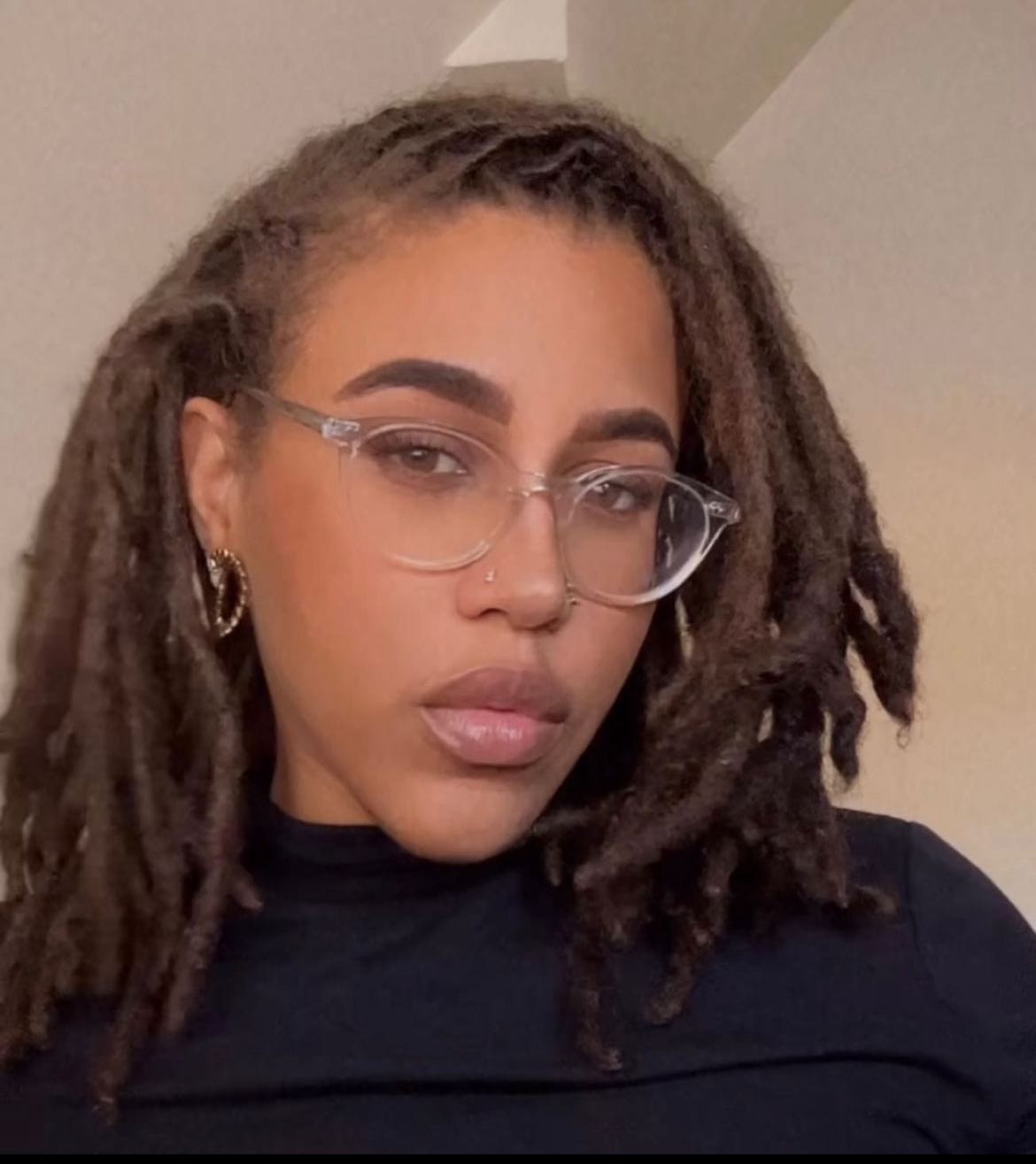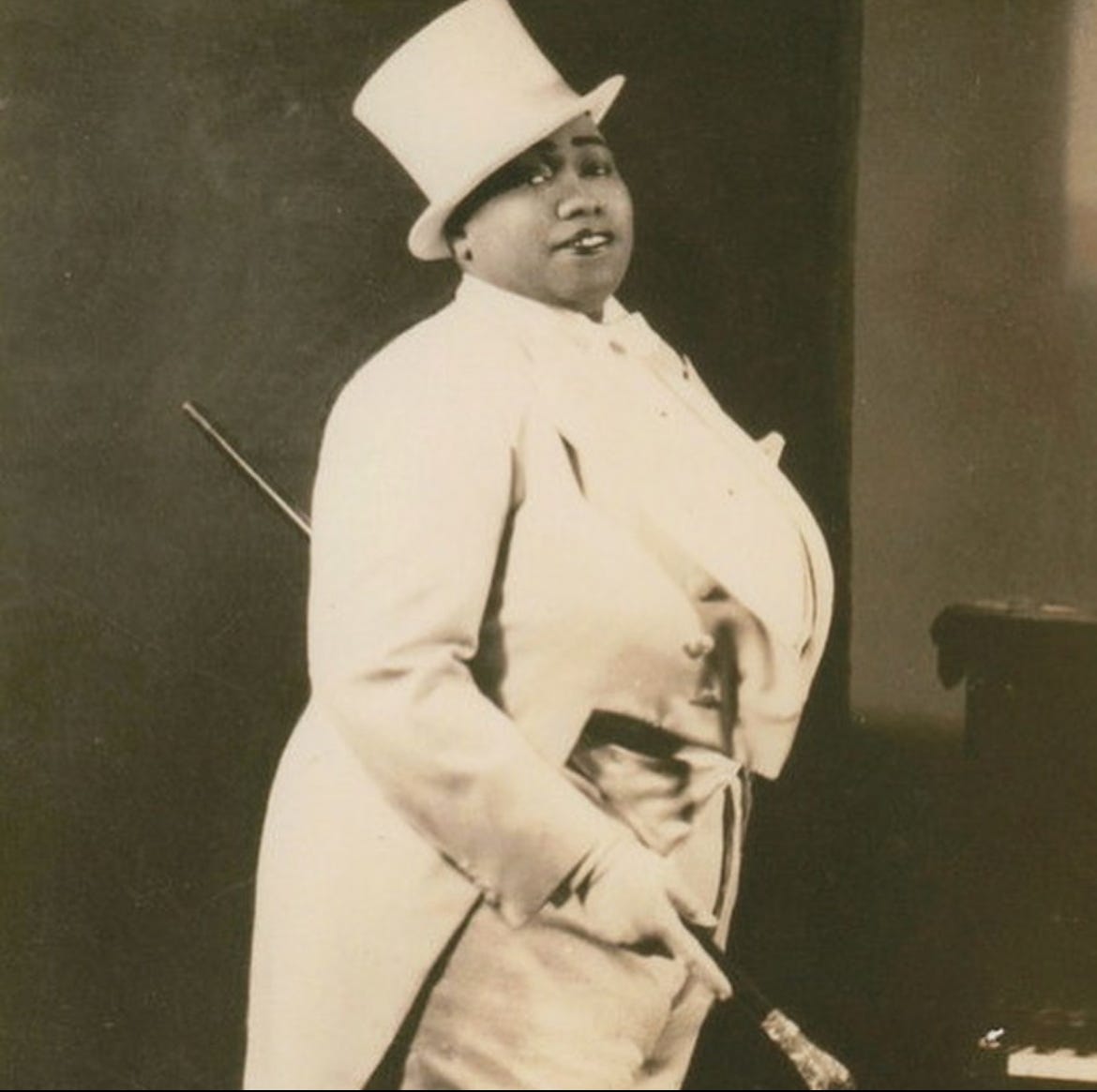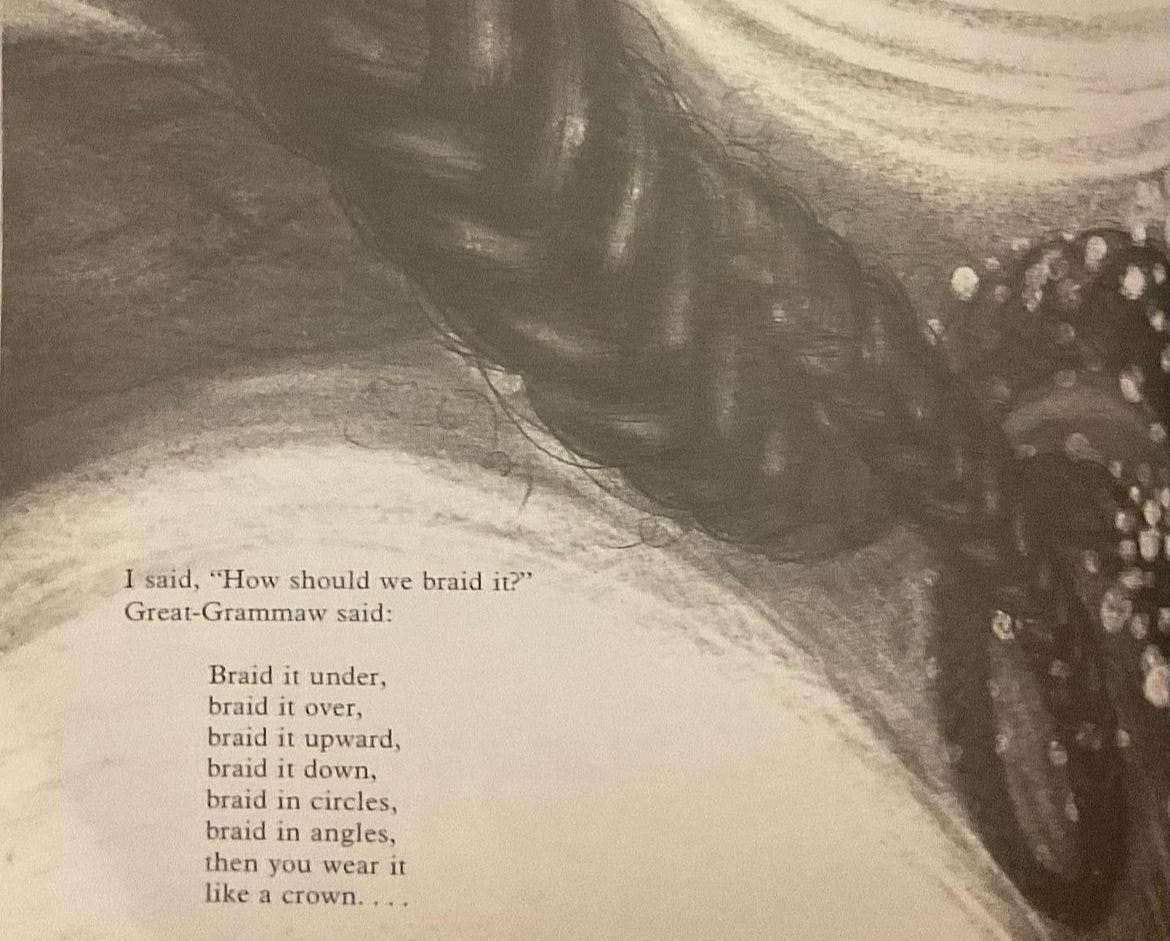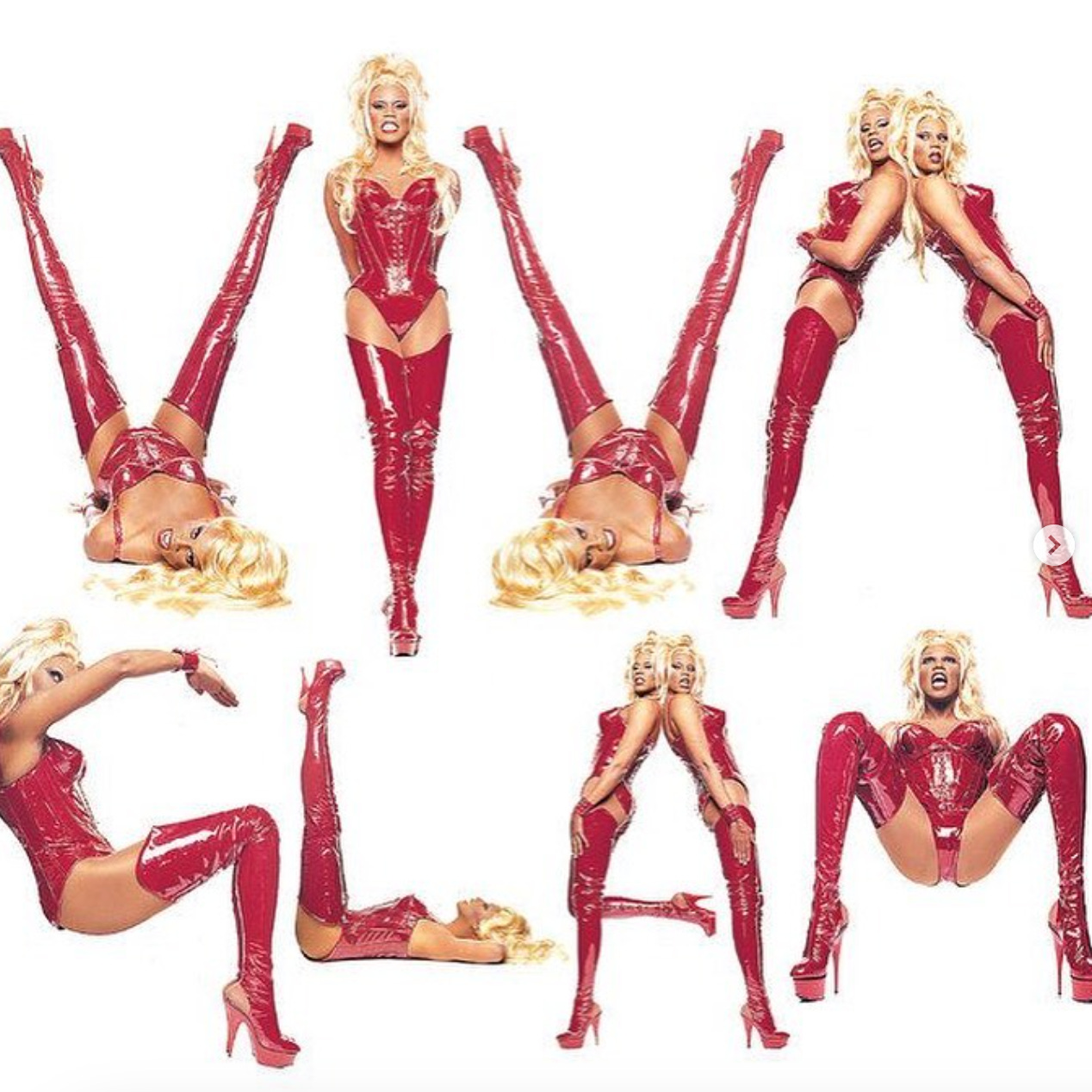“Beauty is everything to me because beauty is freedom”: an Interview with Camille Lawrence of Black Beauty Archives
Welcome to Beautiful Conversations, my new interview series. I want to use my newsletter as a place to play and explore! This includes interviewing people I admire who inhabit the world of Black beauty in various capacities.
Archiving is a vital way to pay homage to our pasts and consider how they inform our present. I’ve written before about the importance of Black diasporic archival spaces on Instagram and how they serve as accessible resources for us to remember both significant and mundane aspects of the past.
Black Beauty Archives, founded in 2020 by Camille Lawrence after pandemic-related shutdowns left her out of work, is a repository filled with analyses of the ways Black cultures reference one another, vintage images, video clips, items and more. Lawrence’s archives examine what Black cultures consider beautiful and why those things are beautiful to us. One of my favorite posts on the archive’s Instagram page is about the drag king Gladys Bentley, where we are invited to think about her subversive beauty. Lawrence, who is a multi-hyphenate (she’s an archivist, a makeup artist, and more!) and I chat about topics including beauty and spirituality, community and her favorite beauty-related archival item in her possession. This was such a wonderful, wide-ranging interview that gave me lots of food for thought, so let's jump right in!
This interview has been edited for length and clarity.
Houreidja: What did beauty mean to you growing up and what does it mean to you now?
Camille: Oh, wow. That's such a loaded question. The truth is, beauty is everything to me. I grew up in a really big family, watching my mother and my Nana do all of their beauty and ritual practices. I also come from a really spiritual family, so Sunday Best is a thing, and that Sunday Best continues throughout the week. So, I definitely feel like beauty has always been a safe space and an outlet for me to transform myself, to see myself, to feel affirmed through my aunties, friends, cousins, folks in community.
It's the first thing I think about when I wake up and the last thing I think about when I go to bed. The first and last thing that I do is taking care of self. Beauty is everything to me. Beauty is how I see myself, how I see the world, how I try to show up in the world. And now where I'm at in my life and my career, it’s the only thing that I really want to invest and continue pouring my time into.
I say this a lot: I definitely feel like hair salons, braiding salons, barbershops, in between your grandmother's legs on a front step in the kitchen, it is the most safe space, and, I feel, safer than Black churches in our communities where it doesn't matter who you are, it doesn't matter how old you are, you can show up in these spaces, you're going to be cared for, loved on, and affirmed to go back into the world where everyone tells you in the world that you're not beautiful, you're not a human, you don't matter, and so beauty for me is not— I don't look at it as a revolutionary tool. No. I'm always centering everything out of joy. And as an African American woman, my mom's side is from Barbados. My dad's side is from Alabama. Even after doing my ancestry from my mom's lineage, our maternal lineage goes back to Cameroon.
And so I'm more than aware that a lot of these spiritual and ritual practices that we're carrying as African Americans, it's ancestral practice. It's not just, “Oh, let me just do this thing.” It's deeper than hair. It's deeper than all the aesthetics and layering of adornment that go into it. It's about being really intentional to affirm our existence in the world and have a space to play and process and experience and experiment.
And so beauty is everything to me because beauty is freedom. Beauty is all the things that I want to be and I hope I continue to be even as an old lady.
I love that answer. So you had mentioned ancestry a little bit— you had talked about your Nana and about going back [in lineage]. What, to you, is the importance of the archive in understanding beauty?
Ooh. Well, the first archive that I've known is my grandmother's living room— our family photo albums, our obituaries. Then just as an archivist working with different art forms, I started working with forms that were ephemeral, like dance. Then when I started thinking about that, I'm like, “You know what? Beauty practices are very ephemeral.” They're temporary. They're not long lasting because we don't want them to be. They're ever changing. They can [last], right? If we're doing, like, microblading or something, but for the most part they're ephemeral experiences.
And so outside of the archive in my Nana's home, every Friday when my Nana was an educator, when she was done, she would pick me up from school and I would go to Rita's hair salon with her. An all-pink salon run by a Black Haitian woman, and I would sit there with my Nana and she would have all her designer silk scarves. Her ritual was going there, getting her hot comb press, putting her silk scarf on with her matching designer shades. She would get her Estée Lauder lipstick, do the lip and the cheek, rub it in. She'd get a pencil and just go. And so, seeing Nana's ritual and seeing my mom's ritual, my mom always had really long nails and they would grow naturally. She would do all those pixie cuts in the ‘90s and the French rolls and all of that. So seeing their versatility, seeing their body as an archive, right? Because our bodies hold memory.
I'm a person who's a big believer. Even if we don't know our ancestors and we can't speak to them or speak their language, their blood is in us, right? And whatever we need to do when we're in the moment, that memory and information will activate through our bodies. And so I'm someone who sees the archive outside of just the physical. I see the body as an archive too, and I think that's maybe connected to archiving dance, and you know, watching my mother and my aunties and them. But the archive is everywhere. It makes me happy being in relationship and community with Black archivists across the globe because our archival practices depart very much so from those colonial archival practices that we get degrees for.
So I'm always in conversation and rethinking and undoing how we are categorizing an archive. Like, a beauty salon is a living archive. A community garden is a living archive. A braiding salon is a living archive, I'm sure as you know. So, yeah, the archive is really just remembering and affirming memory in the space and sharing that with community.
So continuing on with that, what led you to found Black Beauty Archives?
When I graduated high school, I was too afraid to declare myself a visual arts major. So I was like, “Oh, I'm going to do art history to be safe,” and I did make up the entire way to pay for my college education. And my college route wasn't a four-year or a two-year. It was very delayed because I had financial responsibilities in my family. I I knew that beauty would be a way for me to connect with folks, kind of be my own boss, and then experiment and play; take those same concepts that I understood from painting and bring it into makeup. So time went on. I didn't know that makeup was gonna be a thing for me. I thought it was just gonna be, “Okay, I'm paying for school,” and I'm done.
I didn't think that I would go on tour and get publications and do music videos and all these things. And so, you know, it's the middle of the pandemic. I'm working with [Tierra] Whack. 2020, all the tours get canceled. All my gigs are canceled for all my clients. And I was just looking for inspiration. I feel like our country and society focuses so much on trauma porn and I'm not into that. I'm looking for inspiration. My husband is an environmentalist and so he has a company where his staff recycles and recovers a lot. And over the years, we're just, like collective people. He apparently had all these bins he was saving, but he didn't know what he was saving them for.
And I had started collecting things. So one day he brought it upstairs and he was like, “Yo, I got something for you.” I opened the bins, it’s tons of Ebony and Jet Magazines. And I just start reading them and consuming them. And I'm going back and I'm like, “Whoa, I didn't know all these things existed!”
And so then I'm like, “Yo, let me look for a beauty library,” and I'm online and I'm like, “What the hell? Like, this don't exist? Are you serious?” Like, it's 2020. We don't have a Black beauty library. This is wild. And so, as you know, when we're looking on Pinterest or Instagram for any inspiration, the algorithms are prioritizing who's programming them. And so it was white, straight men. And so we're seeing what they believe is the ideology of beauty. Mind you, talking with dark-skinned Black women... from Gabby Douglas, Tierra Whack, like, I can't get inspiration from just anywhere, and they need to be able to see themselves to believe in the look. So it was either I was sketching looks on brown paper, or I was literally pulling inspiration and creating mood boards. And so I got sick of that, so I was like, “Let's start an archive,” but where should we start? I didn't want to start collecting from white publications, I wanted to start from Black publications. And so right now we have 1400 objects from 1941 to present-day, including magazines, photographs, mixed media, cosmetics, hair tools, wigs, durags. Everything you could think of, we have. We just also added to the collection Big Freedia's collaboration with Black Opal. I literally just got this in the mail yesterday, the first edition of Black Dresses Hair Magazine. So, yeah, I'm really excited. And for me, I was like, “Yo, everyone needs to learn about Black beauty practices, especially with everything going on.”
In making it, it was also my intention to not be the face. It's not one person. It's a collective effort in a collective community. And so I wanted to develop it from the feminine perspective of the Black maternal or Black femme, and then just open up the doors for everyone else to come in and contribute who is in community with us.
I love that. And I feel like each answer you've given me has touched on another question I want to ask. I feel like it's all connected!
What is your favorite beauty-related archival item that you've encountered in your work with Black Beauty Archives?
We still have the Winnie Harlow ads, the physical ads. We have the– let's scratch that. Hold on. Okay. Okay. Okay. [Lawrence pulls out an item.] I have a thing, I have a thing that I just acquired and I'm like, “Nah, that's my favorite thing.” Okay. I'm up. Because I'm a ‘90s baby, I love this the most.
This is my favorite thing. So this is from the 25th anniversary of MAC Viva Glam and I'm also a MAC girl. I worked at MAC for four years. It’s a VHS tape and it celebrates the anniversary of RuPaul, what they started with Viva Glam. And then when you open up VHS, it's like a three-piece.
My goodness, that's really cool.
It just makes me happy to see a full circle, right? [A] Black, gay man who's a drag queen talking about AIDS, which is impacting us the most. And then we're coming full-circle 25 years later for a Black woman who has vitiligo, who's a supermodel.
It just has so much richness and history in it. So this is probably one of my favorite pieces.
That’s really, really cool that you get to hold and be in the presence of something like that.
My next question for you, which you also sort of touched on earlier is, are there any beauty rituals that you consider particularly important or sacred?
Hmm. I think it's one that I'm actually forming now. [...] One thing I have started doing since I've been locked is spraying my hair with an oil blend.
And as I'm spraying my hair, I've actually put holy oil or holy water in there. That's a new ritual that I've been adding because my family's always anointed ourselves before we would go out the door, and so I was like, the fact that I can put that in my crown makes me feel different, so it's almost kind of like I'm evolving on a practice that they did, and I say it's a beauty ritual because my family would pride ourselves on being greased up in the street, you know. It shows you’re loved, but something about the oil on the forehead— we see each other, like there's an anointing. We see you. So I've taken that, like, anointing oil thing and added it into my spray for my locks. So I think that's maybe a ritual that I've evolved and kept into my practice. I do it day and night.
Where do you find that makeup artistry and the archival work intersect?
So, both are very detailed practices. And you gotta know what you're doing, right? You're not gonna be a successful makeup artist if you don't understand product knowledge, skin aesthetics, mixing colors, color theory. You're not gonna understand that. Same thing with archiving. You're not gonna put together a body of work or a collection if you don't understand the right tools to use, packaging, how to remove things that may be molded, deteriorated.
Because a lot of the stuff we experience, I think it's very similar where people see us as one thing, both makeup artists and archivists, when, in those positions and careers, we're wearing 30 different hats. A makeup artist is not just a makeup artist, they're affirming people's confidence, they have product knowledge, they're also innovating and creating art in real time from their minds, like that level of improvisation is really *chef's kiss*.
How do you see your understanding of beauty continue to develop as you further the work that you're doing?
I feel like the more that I'm in relationship with the diaspora and the more that I'm in fellowship with Black folks across the world, my understanding of beauty will grow. Okay! Point blank period, because we are the center. We're the beginning and the end. We're the first and the last. I always say, Africa is the future, baby. Like, I don't know where everybody else is going, but that's where I'm trying to go. Because there's just certain things. And I've got this a lot in readings too, where they're like, “Your life is one of ancestral rebirths and you're always trying to go back to the root.”
And I'm like, “Okay, duh, that makes sense.” I work in archives and I want to work with people. But the more that, like I said, I'm in relationship with Black folks because we are the trendsetters. We're the ones making something anew. All the time. Nobody inspires me more than Black women. Nobody inspires me more than Black queer people. Nobody inspires me more than the Black community, wherever they at. Like, I could go visit family in Bermuda for a little bit, go check out stuff in the UK, come back to New York. There's a new salon and a girl's walking out and I'm like, wow, I never thought to layer those colors like that, say less. And I think that's the fly thing about growing up in New York and having family from Brooklyn. You're always seeing so much inspiration because there's a fusion of the diaspora there, you know, everybody and their mama who's Black from anywhere is in Brooklyn. And so being able to grow up and see that, it's interesting. Like going back to Long Island School with that type of hair and swag and nails and stuff, they're like, “Where is you going?”
And then my hope is that because of climate change, because of displacement, because of gentrification, my prayer is that Black Beauty Archives can create more physical spaces to have those ritual experiences to remember on a sensory level. Where I've even debated like, yo, it shouldn't be recorded. It should just be in-person to feel. Yeah, so I've been thinking a lot about that because there's certain things that we would get from those places that I'm not getting right now in my life, or I know I won't get nowhere else.
Thank you to Camille for such a fulfilling conversation and thank you all for reading! Keep an eye out for future installations of this series.
I’ll share more beautiful thoughts soon,
Houreidja











the holy oil anointing! so tender. thanks for sharing